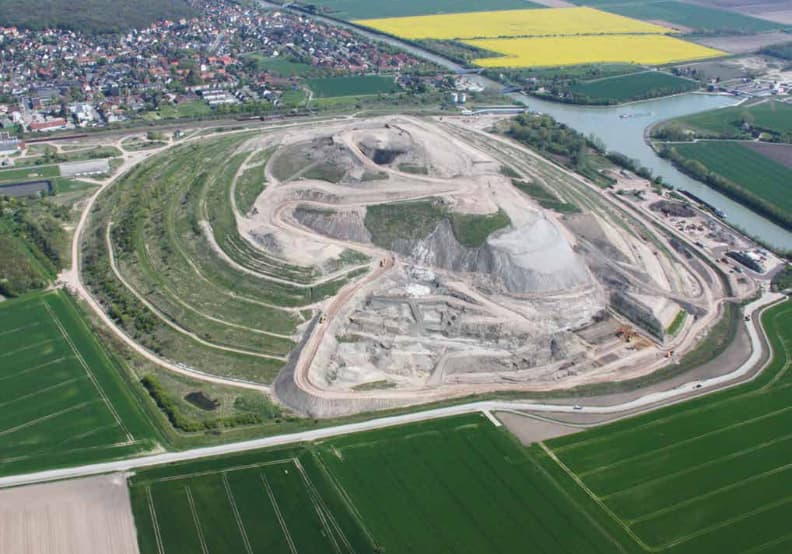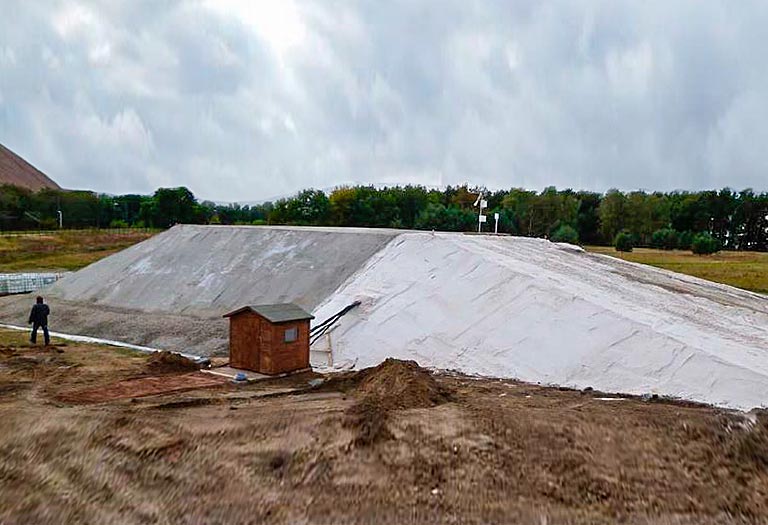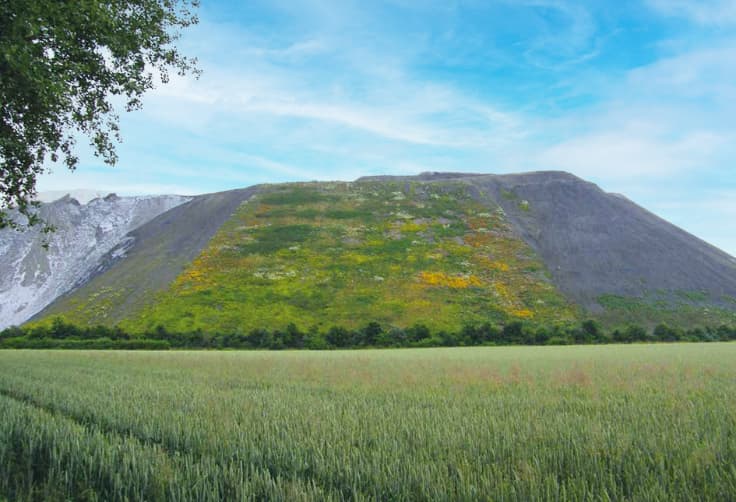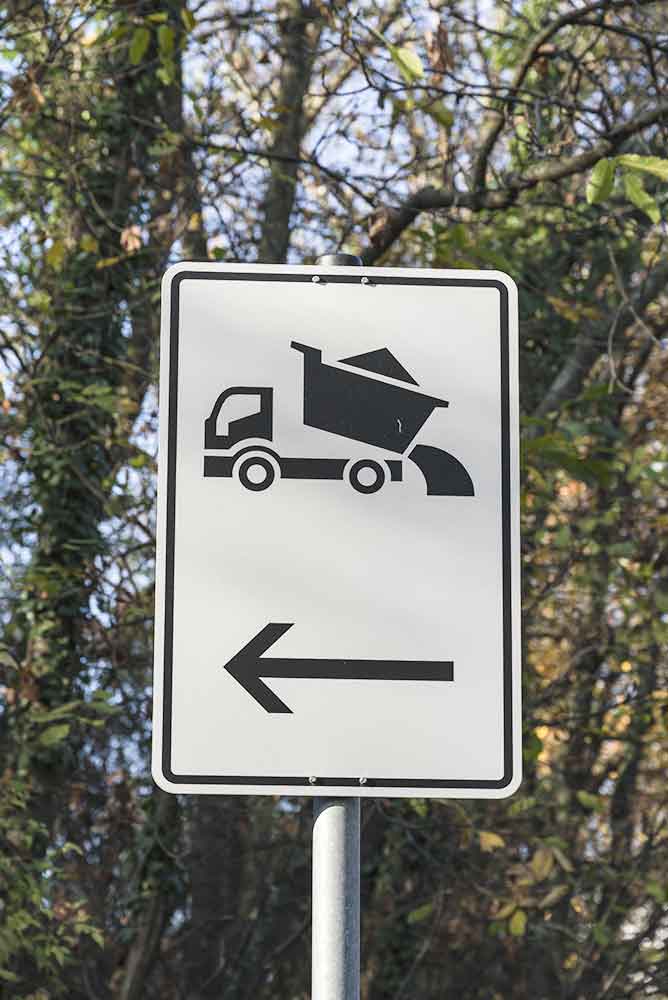COVERING METHOD
PROFESSIONALLY AND HARMLESSLY
In the past the K+S Group has not only covered mine waste dumps according to state of the art technology, but furthermore developed their own methods and improved existing methods. This development has been carried out in cooperation with various universities, consultants and specialists. In doing so, various covering methods are developed which take account of the respective local conditions of the individual waste dumpsites. The most important methods are here:
This is how mine waste dumps are covered
In the covering, several layers of building material and soil are applied to the tailings pile. During the approval stage, it is determined which material should be used in which method and at which tailings pile. This action corresponds to the strict German environmental laws and is supervised by authorities. By installing sealed layers we ensure that the tailings piles are technically sealed from the infiltration of salt water. Also, we make special provision for the collection and regulated disposal of pile wastewater, caused by rain. They are collected via drainages and canals and disposed of in accordance with water law permits. At the very end we plant the top layer of the covering permanently – and create a new habitat.
Our methods for covering tailings piles
Thick layer method
The covering takes place with soil and building rubble and subsequently will be vegetated.
Traditional covering method; soil/building rubble will be used in berm construction style as cover material and subsequently greened; the slope angle must be considerably flattened out.
Sufficient foreland, high material availability. Implementation therefore only on small and medium-sized tailings piles. Further development (improved sealing) of the system for the Lower Saxony tailings pile.
In the new system (Lower Saxony tailings pile) the residual filtration of the covering in the salt rock bodies is reduced to a minimum.

Example: Friedrichshall, Lower Saxony
Infiltration inhibiting layer
By adding insoluble components to the tailings pile residues a thick evaporating layer is formed on the surface.
In a last fill, residue is applied with additive, forming a thick evaporating layer over the course of natural leaching.
Ongoing operation or sufficient residue that can be applied. Implementation so far with a pilot tailings pile and a trial fill in Zielitz.
Less material requirement, bulk thickness at least 10 m.

Example: Pilot tailings pile Zielitz, Saxony-Anhalt
Thin layer covering (DSA)
By applying material parallel to the slope with subsequent greening, this method is particularly suitable for large tailings piles.
A cover layer that is potentially parallel to the slope is brought to the tailings pile in a bulk dumping method and subsequently greened. The cover material must be conditioned in order to generate the required angle of repose.
Technically appropriate material that is capable of approval. Regular operation in Sigmundshall, further development of the system currently at the Werr.
High evaporation performance with relatively low material requirement, bulk thickness at least 5 m.

Example: Regular operation in Sigmundshall, Lower Saxony
High environmental standards, which are stipulated under the respective approval procedures, are crucial for the implementation of all covering projects. REKS accompanies the ongoing, but also planned processes of K+S actively and thus makes a significant contribution to further developing the measures for covering tailings piles.

Origin of building material
It is our aim to use suitable mineral residues for all coverings in order to conserve natural resources. For example, demolition material and excavation soil are recovered from construction projects. But also the use of residual materials from the natural stone industry or residues from energy generation are possible cover materials. Which substances we can use on a case-by-case basis will be defined exactly as part of the approval. Here, limits for the trace elements in the cover material as well as monitoring measures are specified, so that a safe and professional recovery can take place.
These materials are suitable for recovery
For the covering of tailings piles we prepare your non-hazardous waste of installation classes Z0 to Z2. The typical materials that we use include:
- Building rubble
- Excavation soil
- Solid waste from the remediation of soil
- Asphalt
- Track ballast
Interesting to know
Even at the beginning of the 80s K+S researched in the area of covering tailings piles. In doing so, consistently innovative ideas such as the use of torkret and new plastic waterproofing membranes have been developed.
In the research of covering tailings piles, the material behaviour and chemistry are in the foreground. Our studies include various laboratory and greenhouse experiments and trial fields at the tailings pile. For example, the behaviour of the material on the edge is studied, but also the correlation to rainfall.

